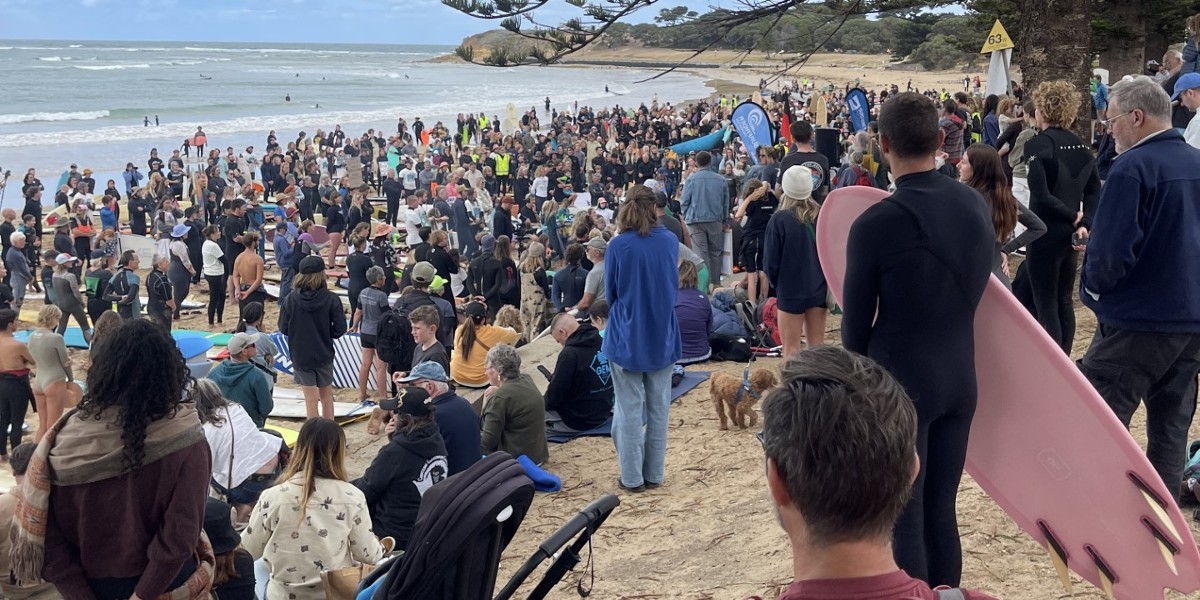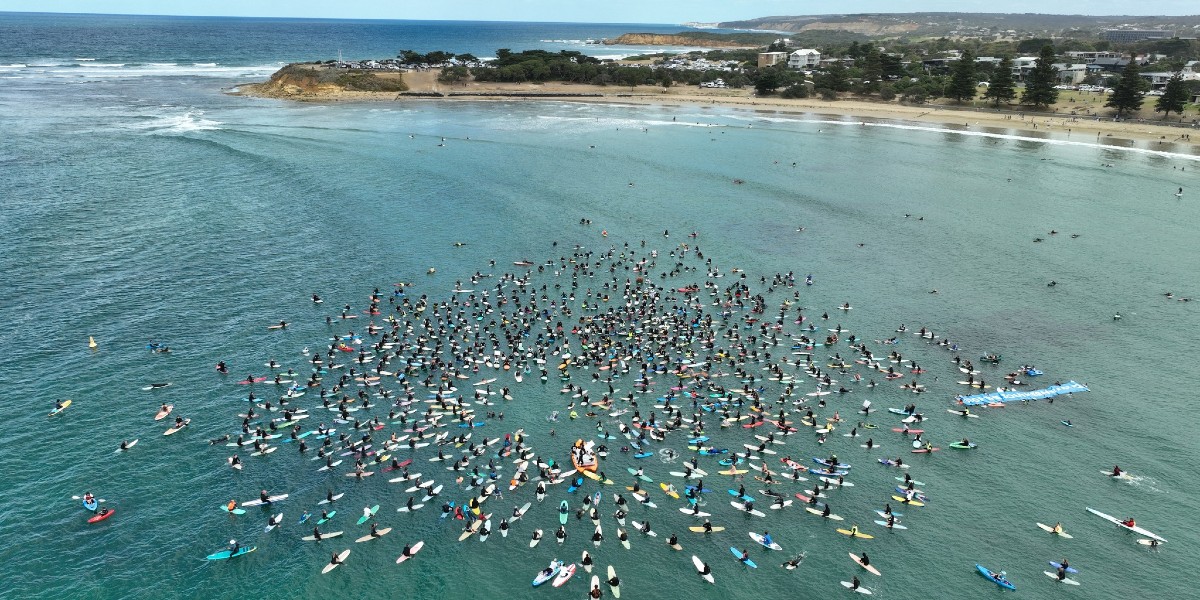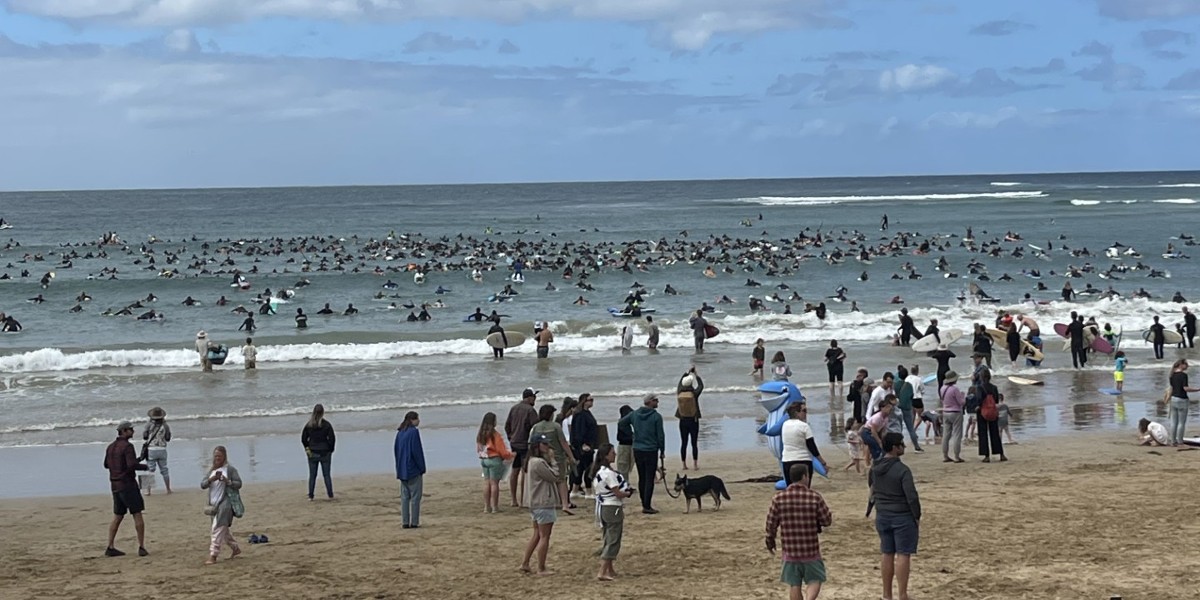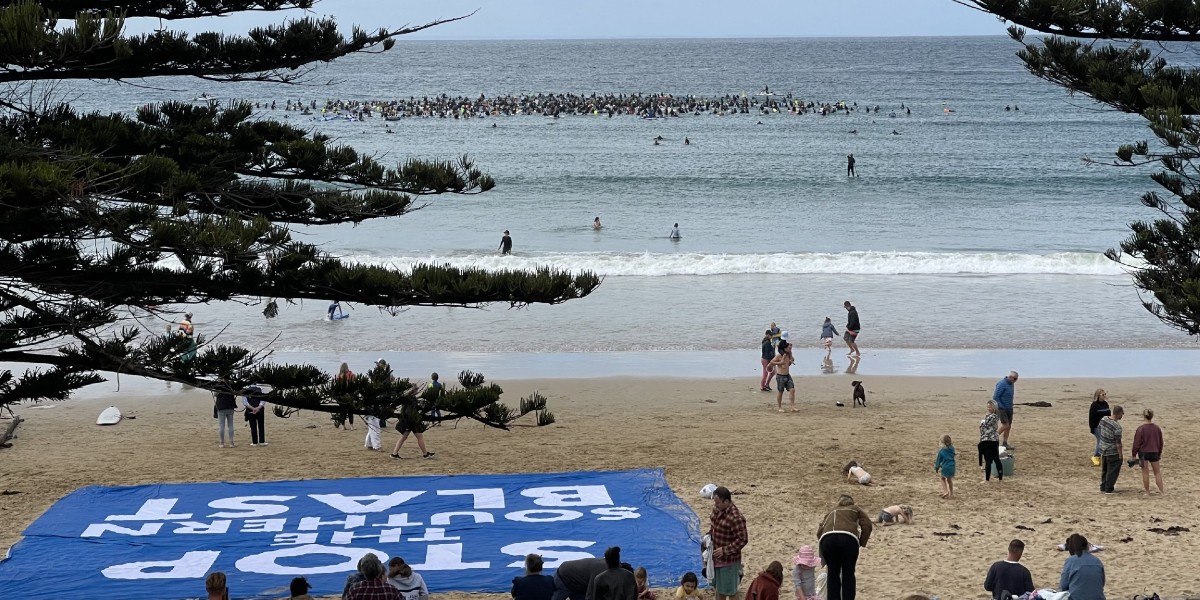Hundreds of surfers have joined forces to protest a mass fossil fuel project off the coast.
Local First Nations leaders spoke to a crowd of around 1,000 people at Cosy Corner yesterday, expressing alarm at the potential impacts of seismic blasting on Sea Country.
A decision from the National Offshore Petroleum Safety and Environmental Management Authority (NOPSEMA) on whether to green light the project by multi-national oil and gas company’s SLB and TGS was expected weeks ago.
If approved it would allow for seismic blasting over an area similar in size to Tasmania, throughout the Otway Basin, stretching from South Australia, along the Western Victorian coast and down to Tasmania.

Opponents of the controversial practice fear it will seriously damage marine eco-systems, with 256 decibel blasts into the ocean and sea floor going off every few seconds, for up to 400 days.
“We’re gathering here today with community members to paddle out in protest of the largest seismic blasting survey ever in the world,” Otway Coastal Environment Action Network (OCEAN) member Greta said.
“A lot of community members feel really strongly, so it’s great to us all come out in force and protect the places that we love.”

Corangamite MP Libby Coker was present at the rally, watching on as various speakers spoke of their determination to make the issue a political one and take their grievances directly to the government of which she is a part.
Two weeks ago the Labor MP waded into the debate, calling on NOPSEMA to halt its decision on the seismic blast plan, citing a lack of proper consultation from SLB and TGS with impacted communities like First Nations.
NOPSEMA has consistently declined interview requests on the plan, and for other fossil fuel projects in the Otway Basin, but in its latest statement said the environment plan for the Otway Basin 3D Multi-Client Marine Seismic Survey Environment Plan (EP) is still being reviewed.
“Part of this assessment process includes the manner in which consultation with relevant persons has been conducted,” a NOPSEMA spokesperson said.

“NOPSEMA cannot prescribe how a titleholder undertakes consultation or influence them to respond in a certain manner but will assess whether the consultation process has been designed and executed to ensure that relevant persons are identified and provided with sufficient information and a reasonable period to allow them to make an informed assessment of the possible impacts and risks the proposed petroleum activity may have on their functions, interests or activities.”
A consistent criticism from opponents of the proposal, and others like it, is the 30 day time frame allowed for people to respond to EP’s that often stretch to thousands of pages, couched in technical terms that invariably find that risks from the proposed activities can be managed.
TGS’s 1400-page EP before NOPSEMA mentions ‘whale’ 2125 times, but concludes potential impacts of blasting on species like blue or southern right whales would be ‘moderate’ or ‘low’.
Opponents of the practice disagree with this assessment and say blasting can cause hearing loss and disturb feeding and breeding in whales and dolphins, and mask communications between them. Local fishing groups have spent years building evidence they say shows that blasts also reduce catch rates of commercial fish.







